Patrick MacAlpine
Cross-Trajectory Representation Learning for Zero-Shot Generalization in RL
Jun 04, 2021



Abstract:A highly desirable property of a reinforcement learning (RL) agent -- and a major difficulty for deep RL approaches -- is the ability to generalize policies learned on a few tasks over a high-dimensional observation space to similar tasks not seen during training. Many promising approaches to this challenge consider RL as a process of training two functions simultaneously: a complex nonlinear encoder that maps high-dimensional observations to a latent representation space, and a simple linear policy over this space. We posit that a superior encoder for zero-shot generalization in RL can be trained by using solely an auxiliary SSL objective if the training process encourages the encoder to map behaviorally similar observations to similar representations, as reward-based signal can cause overfitting in the encoder (Raileanu et al., 2021). We propose Cross-Trajectory Representation Learning (CTRL), a method that runs within an RL agent and conditions its encoder to recognize behavioral similarity in observations by applying a novel SSL objective to pairs of trajectories from the agent's policies. CTRL can be viewed as having the same effect as inducing a pseudo-bisimulation metric but, crucially, avoids the use of rewards and associated overfitting risks. Our experiments ablate various components of CTRL and demonstrate that in combination with PPO it achieves better generalization performance on the challenging Procgen benchmark suite (Cobbe et al., 2020).
Measuring Sample Efficiency and Generalization in Reinforcement Learning Benchmarks: NeurIPS 2020 Procgen Benchmark
Mar 29, 2021
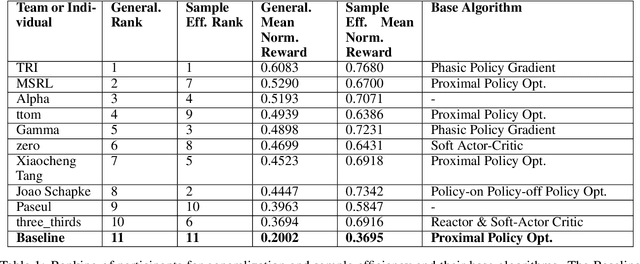
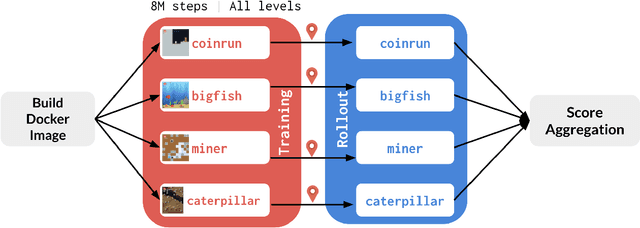
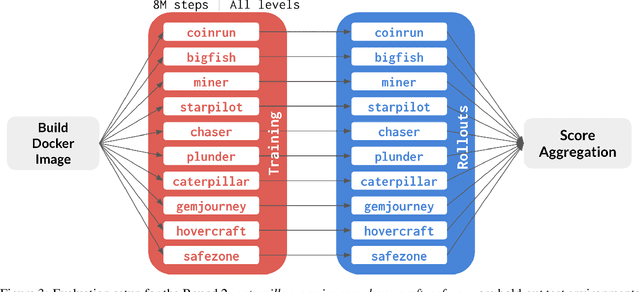
Abstract:The NeurIPS 2020 Procgen Competition was designed as a centralized benchmark with clearly defined tasks for measuring Sample Efficiency and Generalization in Reinforcement Learning. Generalization remains one of the most fundamental challenges in deep reinforcement learning, and yet we do not have enough benchmarks to measure the progress of the community on Generalization in Reinforcement Learning. We present the design of a centralized benchmark for Reinforcement Learning which can help measure Sample Efficiency and Generalization in Reinforcement Learning by doing end to end evaluation of the training and rollout phases of thousands of user submitted code bases in a scalable way. We designed the benchmark on top of the already existing Procgen Benchmark by defining clear tasks and standardizing the end to end evaluation setups. The design aims to maximize the flexibility available for researchers who wish to design future iterations of such benchmarks, and yet imposes necessary practical constraints to allow for a system like this to scale. This paper presents the competition setup and the details and analysis of the top solutions identified through this setup in context of 2020 iteration of the competition at NeurIPS.
Multi-Preference Actor Critic
Apr 05, 2019

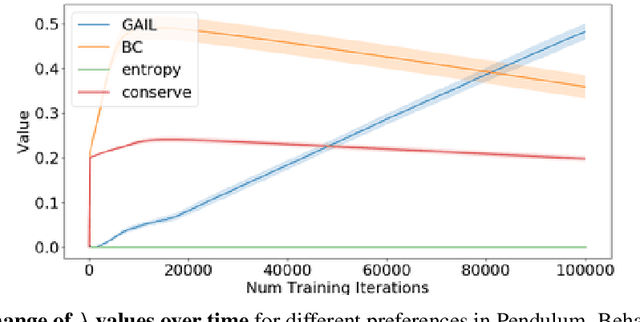
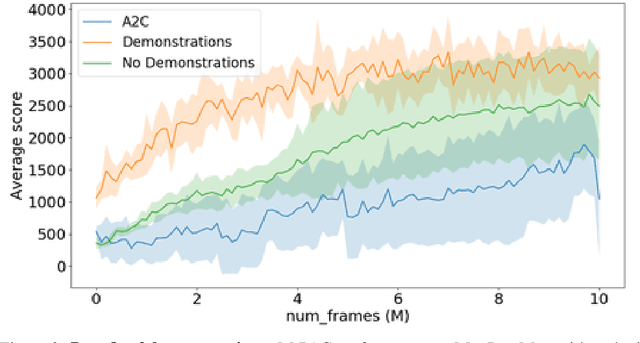
Abstract:Policy gradient algorithms typically combine discounted future rewards with an estimated value function, to compute the direction and magnitude of parameter updates. However, for most Reinforcement Learning tasks, humans can provide additional insight to constrain the policy learning. We introduce a general method to incorporate multiple different feedback channels into a single policy gradient loss. In our formulation, the Multi-Preference Actor Critic (M-PAC), these different types of feedback are implemented as constraints on the policy. We use a Lagrangian relaxation to satisfy these constraints using gradient descent while learning a policy that maximizes rewards. Experiments in Atari and Pendulum verify that constraints are being respected and can accelerate the learning process.
 Add to Chrome
Add to Chrome Add to Firefox
Add to Firefox Add to Edge
Add to Edge